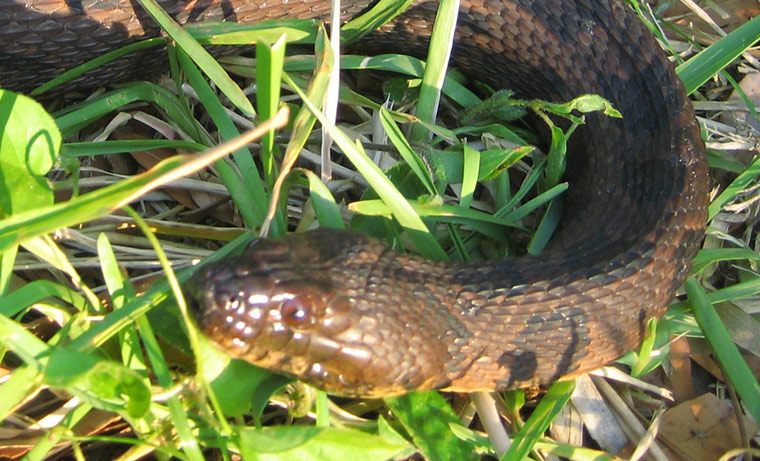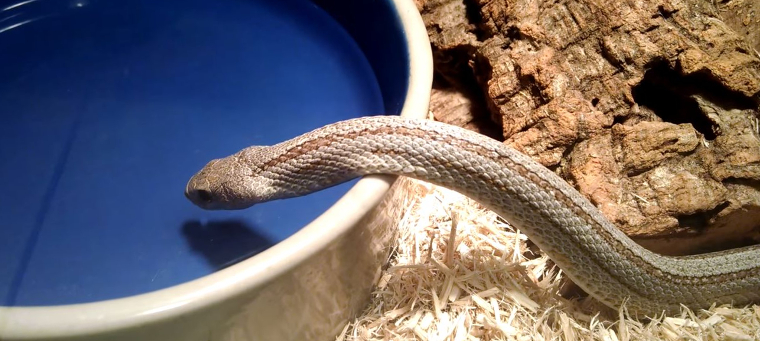-
info@aaanimalcontrol.com
Call us for help in your town
Humane Wildlife Education
Types of Florida Water Snakes
Need snake removal in your hometown? We service over 500 USA locations! Click here to hire us in your town and check prices- updated for year 2020.
There are over 20 different types of non-venomous snake found in Florida, and six venomous species too. Four of those 26 snakes are invasive species — ones that are not native to Florida. One of the non-venomous snakes is actually classed as a sort-of venomous snake too, although the toxins are generally not considered to do that much damage.

For the record, it's the ringneck snake that is a ‘little bit' venomous, and the actual venomous species are:
Timber rattlesnake
Southern copperhead snake
Eastern diamondback rattlesnake
Eastern coral snake
Dusky pigmy (or pygmy) rattlesnake
Cottonmouth snake
The invasive species are:
African rock python (also known as the Northern rock python)
Boa constrictor (also known as ball python)
Burmese python
Carpet python
Types of Florida Water Snakes
Although the African rock python is a land and water dwelling snake, you'll find it close to the water usually, and this is a snake that has been introduced to Florida by accident, more than likely because of the exotic pet trade. This snake is one of the largest snakes in Africa, growing to over 20 foot in length, and is certainly one you won't want to come up against in the waters of Florida. Back in 2009, the Florida Everglades showed itself to be the home of one of these beasts, and that's not the first time they've been noted to be an invasive problem. It was during the nineties that feral, not stray, ball pythons were found there. A feral animal is one that has been born into the wild, which generally means two escaped or released pet snakes have come across each and mated.
The Burmese python is another very large snake that has been accidentally and catastrophically introduced to the Florida Everglades and surrounding areas. This snake is one of the top five largest snakes found across the globe, and are found in trees, although generally considered to be semi-aquatic creatures, therefore, one of the types of Florida water snakes. This species can also reach close to 20 feet in length.
The salt marsh snake is another semiaquatic snake, and is a relatively small one, only measuring it at a maximum length of 75-80 cm. Then there's the gulf salt marsh snake too, plus the banded water snake, also known as the Southern water snake, black snakes and black swamp snakes which, again, are also known by a number of different names, including Eastern racer snake, Eastern hognose snake, and Eastern indigo snake.
All snakes need water in some capacity or another, and more snakes are semi-aquatic than you'd think. It definitely gives you something to think about if you live lose to the water, and also if you have water, such as a pool, in your back yard. Almost all species of snake are attracted to pools, and during the winter, heated pools will offer warmth. During summer, the cool water offers just that — cool temperatures. Perhaps it's time that you made sure your home was as snake-proof as you could make it?
Do snakes drink water?
Need snake removal in your hometown? We service over 500 USA locations! Click here to hire us in your town and check prices- updated for year 2020.
Snakes do drink water, and if you've ever had a pet snake, you may just have been treated to the delight of watching yours drink from a cool bowl of water. All animal species on earth need water in some way in order to survive, but many of them get that water in very different ways.

Dogs, for example, will scoop their tongue under itself, forming what looks like a ladle. They then use that ladle-effect to scoop the water into their mouth. Cats work slightly differently to this, literally lapping the water up.
Snakes can get some of the water they need from the prey they consume, but when they do need a little top-up, a cool pool of water provides the perfect refreshment. If you were to watch, you would see the snake lower its head into the water, taste it with its fork-like tongue a few times, and then drink. You would see the 'cheeks' of the animal move, not too dissimilar from the human method of drinking water, as the fluid is drawn into the snake's body. Being quite small creatures themselves, they tend to prefer shallower pools of water, such as puddles. Larger pools make it harder to slowly lower the head into the liquid, or forces the snake to use more muscle-power to lower the head down to a further depth.
For more information, you may want to click on one of these guides that I wrote:
How much does snake removal cost? - get the lowdown on prices.
How to get rid of snakes - my main snake removal info guide.
Example snake trapping photographs - get do-it-yourself ideas.
Snake job blog - learn from great examples of snake jobs I've done.
Do snakes eat birds?
How to Remove a Snake in a Swimming Pool


















